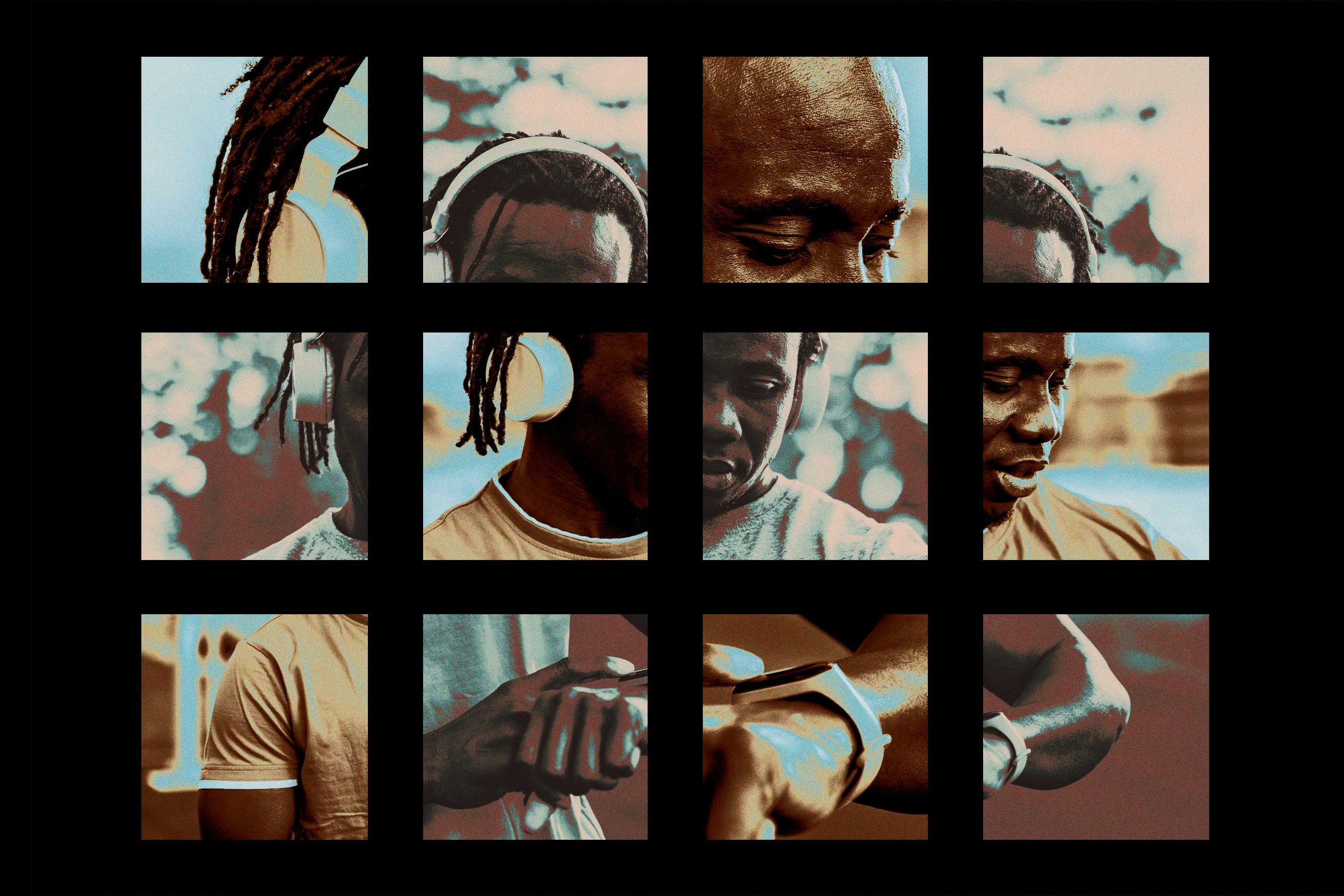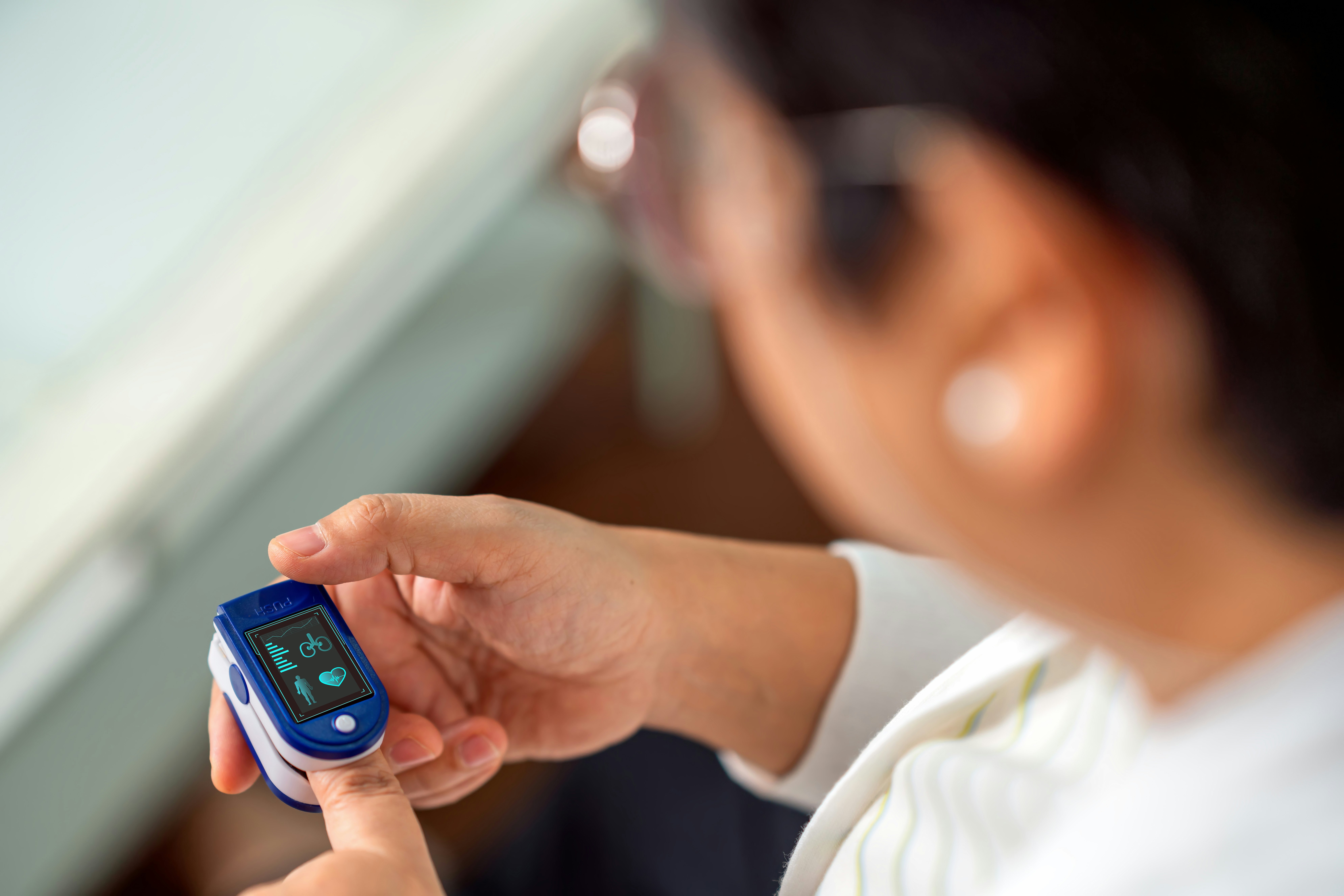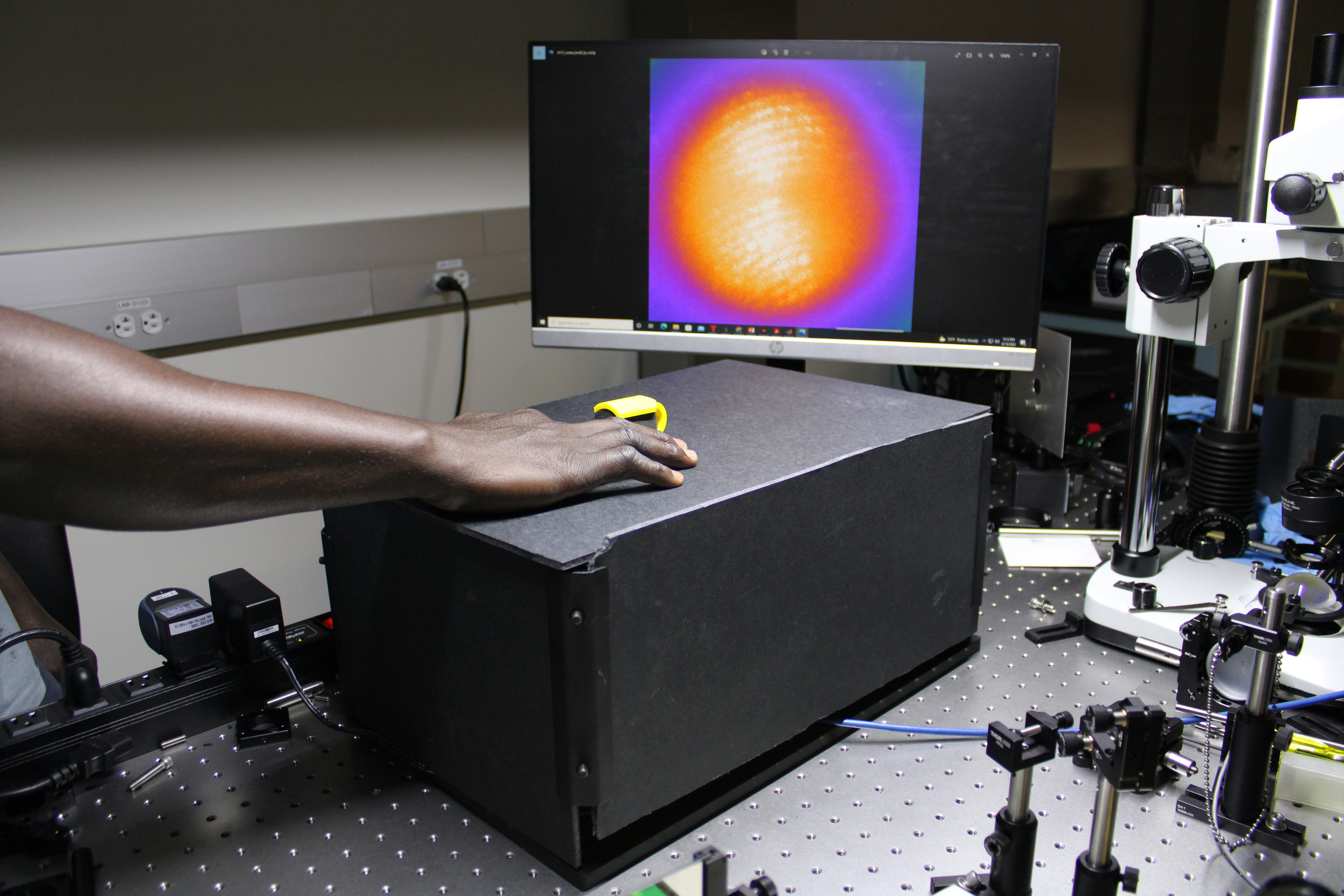
In the early months of the pandemic, Ashraf Fawzy, then a pulmonary fellow at Johns Hopkins University, noticed something strange. Black patients he was treating, all hospitalized with Covid-19, had oxygen levels scattered all over the place, often not in sync with their dire respiratory symptoms.
“I remember one particular encounter…an African American woman, relatively young with asthma, came in with Covid [and] we were weaning her off supplemental oxygen,” Fawzy, now an assistant professor of medicine at Johns Hopkins, tells Inverse. But the patient’s pulse oximeter — a non-invasive medical device to rapidly measure blood oxygen levels — were giving readings higher than what her actual oxygen levels were on blood tests.
“We realized we were under-treating her with oxygen because we were relying on these inaccurate pulse oximeters,” he says.
One inaccurate machine could have been an isolated case, but Fawzy wasn’t the only one noticing something off with pulse oximeters. As the Covid-19 pandemic raged on and the simple fingertip device became an increasingly recommended way to monitor drops in oxygen, a December 2020 study in the New England Journal of Medicine captured national attention: Black patients were nearly three times more likely than white patients to have hidden hypoxemia, or dangerously low oxygen levels missed entirely by pulse oximeters.
“We realized we were under-treating her with oxygen because we were relying on these inaccurate pulse oximeters.”
The study spurred considerable alarm within the medical community, as pulse oximeters are a heavily relied-on medical device. In 2021, patients and lawmakers sent a letter to the Food and Drug Administration (FDA) expressing concerns about potential racial disparities, noting the pulse oximeter disparity as “a matter of life or death.”
“The pulse [oximeter] has become the poster child of [health inequity], in part because of the pandemic. It really highlights the need for diversity at all stages of technology development, from the nascent stages of coming up with a design to how these things are tested, vetted, and distributed,” Kimani Toussaint, a professor of engineering at Brown University, tells Inverse.
Pulse oximeters are just one example of a persistent, prevalent, and overlooked problem that the Covid-19 pandemic brought to light: Medicine and healthcare have harbored racial bias since their inception. But this long-known problem finally reached the federal level. In November 2022, the FDA discussed plans to both improve pulse oximeter regulation and provide clearer labeling and more testing of these devices. Now, the question becomes, can scientists fix these biases, starting with the ubiquitous pulse oximeter, and prevent them from happening in the future?

The history of the pulse oximeter
Long before it made its way to hospitals and consumer markets, the pulse oximeter was originally developed for the military by American and German scientists during World War II, according to a 1986 article in the Journal of Clinical Monitoring. The aim was to prevent fighter pilots from losing consciousness due to oxygen deprivation as they flew at high altitudes. The first iteration of the device, according to the report, was more of a clip-on earring pilots wore that warned them to take supplemental oxygen when their oxygen levels dipped below a critical level, making them more likely to lose consciousness.
Pulse oximeters are just one example of a persistent, prevalent, and overlooked problem that the Covid-19 pandemic brought to light: Medicine and healthcare have harbored racial bias since their inception.
Between the 1960s and 1970s, while collaborating with NASA to develop health devices for astronauts, computer company Hewlett-Packard (HP) took a stab at expanding the ear pulse oximeter for the hospital market.
Interestingly enough, this would be the first attempt at an equitable device, although this probably wasn’t purely for the sake of equity.
At the time, and still today, pulse oximeters worked like this: A light source shines two wavelengths of light — red light at 600 nanometers and infrared light at 940 nanometers — into a finger, passing through fingernail, skin, tissue, and blood. Hemoglobin, the molecule that carries oxygen throughout the body, absorbs either wavelength depending on whether it’s oxygenated (absorbing more infrared light) or not (absorbing more red light). How much of either wavelength is relayed back to the pulse oximetry is used to provide a blood oxygen level percentage.
HP said it wanted something that would work for all skin types; in the October 1976 issue of their journal, called The Hewlett-Packard Journal, the company acknowledged how oxygen level readings were impacted by “skin and blood pigments, and the surface characteristics of the skin.” HP engineers borrowed the ear clip-on design and wired it with fiber optic cables that transmitted eight different wavelengths of light onto the skin — different brightness settings for different skin types. This build allowed the oxygen reader to be specifically adjusted and calibrated to one’s skin color. Indeed, this appeared to work in experimental trials HP conducted involving Black patients. Later studies of HP’s device show that this early pulse oximeter more closely matched the invasive arterial blood gas tests, which takes a blood sample to measure oxygen levels along with carbon dioxide and pH.
Despite its early promise, HP’s pulse oximeter didn’t take off and had quite a number of limitations, Philip Bickler, director of the University of California, San Francisco’s Hypoxia Lab, tells Inverse.
“It was a clumsy clamp that you put on the ears that didn’t really account for differences in the size and shape of [someone’s] ears,” says Bickler.
On top of that, it was quite pricey at $13,000 a pop in 1970 and found mostly in a select few research labs. With the boom of the personal computing market of the 1980s, HP shifted its focus and abandoned plans to miniaturize its pulse oximeter.
Layers on layers of bias
Subsequent devices would continue to use light as a means of measuring oxygen levels. Given how versatile light is with its spectrum of wavelengths and intensities, it wouldn’t have been hard for pulse oximeter manufacturers to calibrate their devices for darker skin tones, as HP had done. But at the time, the nascent market was largely dominated by those of lighter skin, such as in Europe, the U.S., and Japan, says Bickler. The bias persisted simply because differences in skin color weren’t considered at all important.
“Any additional complexity [like skin color] was met with resistance and a lack of interest,” says Bickler, who in 2005 co-authored one of several other early studies investigating how skin color affected pulse oximeter readings. “[Our study] was largely ignored. It was inconvenient for pulse oximeter manufacturers to accept that the way they had been testing and calibrating their devices [with lighter skin tones] had a flaw.”
The indifference speaks to a wider, persisting crisis of bias within medicine, health care, and pharmaceutical or medical device development, Achuta Kadambi, an engineering professor at the University of California, Los Angeles, tells Inverse.
“There’s essentially three types of bias: The bias of the physical layer, which is what we’re talking about often with pulse oximeters,” he says. “Then there’s bias at the [artificial intelligence], or computational, layer, and a third layer is interpretation bias, which means that even if the rest of the system is equitable, you might have a human factor adjust the output accordingly.”
A prime example of interpretation bias, says Kadambi, is pulmonary function testing, where the results are filtered through equations that compare, or correct, the data against healthy values based on sex, height, age, as well as race. For Blacks and other ethnic minorities, these adjustments tend to assume a lower lung function. That doesn’t necessarily reflect on someone’s actual innate biology. Instead, it normalizes disparities that lead to poor lung health and exacerbate chronic disease, as studies have found.
The bias extends even beyond what’s typically used in a clinical setting to our everyday wearables relaying a constant stream of data we use to monitor and guide our own health.
Other medical-grade devices harboring bias include the ubiquitous infrared thermometers, which are as much relied upon as pulse oximeters to make clinical decisions. A 2022 study out of Emory University found these forehead thermometers, which infer body temperature through infrared radiation produced by the body, were as much as 26 percent less accurate at detecting fever in Black patients compared to oral thermometers.
The bias extends even beyond what’s typically used in a clinical setting to our everyday wearables relaying a constant stream of data we use to monitor and guide our own health.
Devices like Fitbits and Apple Watches operate in a similar fashion to pulse oximeters, using light sensors to capture information such as oxygen levels and heart rate. Most of these wearables use green light (a cheaper option than red and infrared light used in a hospital-grade device), which a number of studies over the years have found may give inaccurate results for those of darker skin and people with obesity. This bias hasn’t gone unnoticed, judging from online complaints and the fact that last month, Apple was hit with a class-action lawsuit for allegedly not warning consumers that its Watch couldn’t accurately gauge blood oxygen levels for those of darker skin.
In the case of pulse oximeters, subsequent studies since the December 2020 report in the New England Journal of Medicine have found inaccurate pulse oximeters readings delayed timely Covid-19 treatments for patients with darker skin or not getting appropriate treatment at all, according to Fawzy, in a study he co-authored in 2022, which was published in JAMA. (Important to note pulse oximeters are not solely to blame for the high Covid-19 mortality rate in Black and other ethnic minorities.) And this is problematic not just for anyone of darker skin hospitalized with Covid-19 but for anyone of darker skin with respiratory issues managed by pulse oximeters.
“As a pulmonologist, my main research interest is COPD [chronic obstructive pulmonary disease], and in COPD, we prescribe oxygen to patients based on their pulse oximeter readings,” says Fawzy. “We’ve been depending on [pulse oximeters] to say whether someone has sleep apnea for decades. So it’s really problematic that there’s a potential underdiagnosis in lung diseases for prescribing oxygen [and] a potential for under-diagnosing sleep apnea using these devices.”
What’s the solution?
In February 2021, the FDA issued a warning that skin pigmentation and other factors could impact pulse oximeter readings. And this past November, a Medical Devices Advisory committee convened to review the current clinical data on pulse oximeters, recommending the agency update its regulation and put labels that warn of potentially inaccurate readings. The FDA has requested new studies to assess pulse oximeter accuracy in hospital settings for both adults and children.
For Black engineers like Valencia Koomson, an associate professor of electrical and computer engineering at Tufts University, the challenge to offsetting the racial bias is not so much overhauling the pulse oximeter entirely but finding ways to improve how it functions.
“We’re dealing with very weak optical signals that have to transverse through tissues with lots of [other] elements that absorb and scatter light,” she tells Inverse. “It’s very similar to when you’re riding a car, and you go through a tunnel. You lose signal because of the absorption of the materials in the tunnel, such that the signal being transmitted from the cell phone tower is too weak to be processed by your phone.
To remedy this, Koomson and her fellow scientists are working on a pulse oximeter that uses the same light as devices currently on the market but includes a technology that measures a person’s skin tone. So if you’ve got darker skin (i.e., more melanin), the pulse oximeter will emit more light.
Skin color, though, isn’t the factor that can give rise to inaccurate pulse oximeter readings. At the Hypoxia Lab, Bickler and his colleagues are seeking to comprehensively understand how these other factors like blood flow and body temperature stacked on top of skin color impact a pulse oximeter reading. In a recent study that’s currently in pre-print, the researchers found that poor perfusion, or blood flow through vessels and body tissues, exacerbated inaccurate pulse oximeter oxygen readings alongside skin color.
“Poor perfusion is super common in sick people,” says Bickler, due to a combination of problems such as low blood oxygen levels, being dehydrated, or being on medications that cause blood vessels to constrict.
Koomson says while further research and innovation are all great and good, it doesn’t change the fact that devising with equity in mind needs to happen at the federal regulatory level, with how the FDA sets guidelines for pulse oximetry approval, which on the whole are relatively lax.
“We know that if you have a [federal] guideline that says that a device has to be tested on a minimum of 10 people and at least 15 percent have to be [of] dark skin pigmentation, that opens the door for a lot of loopholes because ‘dark’ is very subjective,” says Koomson. “That subjectivity is going to affect the kind of product that you put out.”
Other Black engineers, like Brown’s Kimani Toussaint, are taking a slightly offbeat tack by investigating how light’s electromagnetic waves interact and behave with matter such as body tissues, the skin pigment melanin, and blood.

“We’re trying to exploit [these] properties to see if we can use that to differentiate between the response from oxygenated hemoglobin versus deoxygenated hemoglobin,” says Toussaint. “Although we strive to get rid of the bias completely, it’s still an open question how effective our approach is… and how reduced is the effect of having the melanin contribution.”
Toussaint’s lab also has a prototype that’s undergone some initial trials in healthy volunteers. An upcoming clinical study started earlier this year at the intensive care unit at The Miriam Hospital in Providence, Rhode Island. “We’re trying to vet this [device] right now, compare it to [the] gold standard arterial blood draw that physicians normally use,” he says.
Bickler, Fawzy, and Toussaint are optimistic that shining a spotlight on the pulse oximeter will be the clarion call to action within the health community, rousing physicians and other healthcare workers to advocate for a better understanding of the inequities inherent in this devices as well as a hunt for solutions — especially as we don’t have more equitable, non-invasive technologies or alternatives on the foreseeable horizon.
“The FDA is working very hard towards improving [pulse oximeters]. We’ve had funding from the FDA to study pulse oximeters in patients in the hospital and in real-world clinic conditions in a very carefully controlled way,” says Bickler. “It’s been almost 20 years since this was really defined as a problem, and here we are 20 years later. Yes, it’s way too late, but at least it’s on the radar.”
It may also encourage discourse around bias beyond the borders of the pulse oximeter, firmly entrenched in other medical devices and in health care at large.
Part of that need for diversity is essential within a workforce that can inform and guide equity during a technology’s development. According to a 2021 Pew Research Center study, while jobs in science, technology, engineering, and math (STEM) have seen considerable growth in years, Black and Hispanic workers still remain underrepresented.
“These are things now where we have to think about how technologies aren’t as agnostic as we may have thought in terms of their impact on communities,” says Toussaint, “It’s part of the human condition to think about how bias can creep in and be perpetuated, whether deliberately or not.”
THE FUTURE OF YOU explores the tantalizing advancements in personal health, from a future without periods to computers in our brains. Read the rest of the stories here.







